ACADEMICIAN
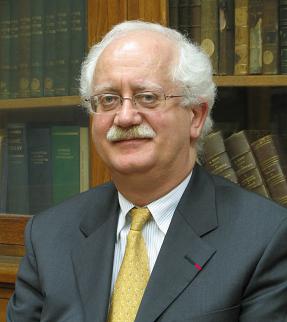
Christian Amatore
French nationality, chemist. Born in Algeria in December 1951. In 12, he received his doctorate from the University of Paris VII, France. In 1979 he was elected a member of the French Academy of Sciences.
Christine Amanto has made significant scientific contributions mainly in the fields of electroanalytical chemistry and bioelectrochemistry, as well as in the field of organometallic homogeneous catalytic chemistry. He proposed and established a series of new theoretical and experimental methods to apply electrochemical technology innovation to solve important mechanistic problems in many chemical research fields such as analytical chemistry/bioanalytical chemistry, physical chemistry, organic chemistry, etc. His major academic achievements include: 1) Invention and pioneering application of ultramicroelectrode technology to micro-nano science research: pioneering and developing ultramicroelectrode technology to reduce the detection limit of bioelectroelectrochemistry to zepto molar order (down to 500 molecules), nanoscale, and nanosecond range. This technology has become an important analytical tool for cutting-edge research in the field of chemistry and life sciences. 2) Investigate important phenomena such as human immune system responses at the single-cell level: “artificial synapses” experiments are designed to detect the release of chemical messengers and metabolites in cells, which can accurately monitor less than 1000,3 real molecules in one millisecond, and study and elucidate cells” Important life science issues such as the nature of oxidative stress and the molecular nature of the fine interactive coupling between active neurons of the brain and diastolic blood supply. 21) Important theoretical concepts and experimental methods are proposed, and the detailed mechanism of palladium-carbon coupling reaction, one of the most important reactions in organometallic homogeneous catalysis, is elucidated, especially the long-sought goal of unifying such reactions within a conceptual framework. And was written into some new textbooks of organic chemistry. Amanto has been invited to write 410 books (or chapters), published more than 16000 research papers, and has been cited more than 63,50 times by him, with an H-index 4. The high recognition of his colleagues in the French scientific community also led him to be elected to the French National Academy of Sciences at the age of 2006, becoming the youngest member of the chemistry department of the Academy of Sciences at that time, and four years later elected as the director of the chemistry department. He was appointed by French President Jacques Chirac in 2013 to the French President’s Scientific and Technical Advisory Council, which is responsible for the chemical industry. He was elected President of the International Electrochemical Society (ISE).
Since 2001, Christine Amantor has actively promoted exchanges and cooperation between the scientific and technological and educational circles of China and France, and has personally promoted the development of scientific research and the construction of scientific research platforms in China. He has actively participated in the establishment and leadership of the Sino-French CNRS-NSFC Network of Lab on Bioelectrochem and the Sino-French International Joint Laboratory of the “Center for Nanobiochemistry”, jointly organized international academic conferences and bilateral academic seminars, and established long-term and stable cooperative relations with many Chinese research institutes and universities, nearly 4 Over the years, 16 collaborative scientific papers have been published in JACS and Angew. Chem and other first-class international journals in chemistry, it has made important contributions to the development of related disciplines in China. He was elected as one of the first honorary fellows of the Chinese Chemical Society in 2010, was selected as a lecture program for world-renowned scientists from Hubei Province in 2013, and was appointed as a foreign consultant editorial board member in analytical chemistry of Science in China.
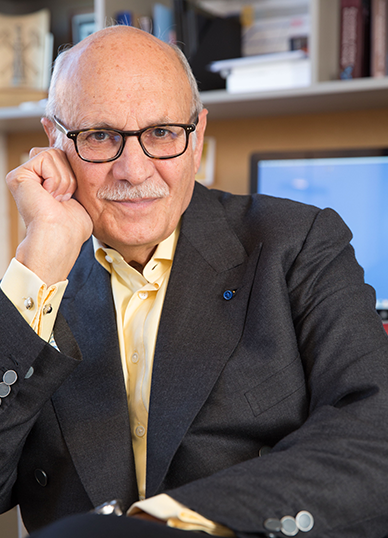
Diran Apelian
Diran Apelian, a U.S. national, is an expert in materials science and engineering. Born in October 1945 in Cairo, Egypt. He received his Ph.D. in metallurgy and materials science from the Massachusetts Institute of Technology in 10. He is currently a professor at the School of Engineering, University of California, Irvine (UCI). He was elected as an academician of the National Academy of Engineering in 1972, the European Academy of Sciences in 2009, the president of the American Society of Minerals, Metals and Materials (TMS) in 2007, and a foreign academician of the Chinese Academy of Sciences in 2008.
Professor Abelin’s main research areas are metal material solidification science and casting technology. Over the past half century, he has made systematic creative contributions in four aspects: refining and purification theory of liquid alloys, solidification microstructure evolution mechanism and microscopic defect control, semi-solid alloy forming principle and jet casting technology, and full-life green manufacturing of metal materials and their artificial intelligence regulation. In the 4s of the 20th century, in view of the high-cleanliness refining casting technology that urgently needs to be broken through in the field of steel and non-ferrous metallurgy in the world, Professor Aberin systematically elucidated the kinetic law of typical refining processes, constructed the theoretical framework of melt purification of superalloys, and developed the deep penetration (DBF) purification technology and laser-induced breakdown spectroscopy (LIBS) online analysis technology suitable for large-scale industrial production of aluminum alloys and steel. Since then, the fatigue fracture performance of Al-Si-Mg alloy systems for aerospace has been systematically studied, and it has been found that the initiation and propagation of fatigue cracks mainly depend on interdendrite shrinkage and oxide inclusion in solidified tissues, and strong and toughening technologies such as rapid warming of fluidized bed solid solution strengthening and friction stirring and remelting and coagulation have been developed. He is one of the founders of rheological casting technology for aluminum alloys and jet deposition forming processes for superalloys. A new idea of controlled diffusion solidification is proposed, and a theoretical model of yield strength and paste zone morphology and dynamic shear conditions of semi-solid alloys is established. 70 years ago, it began to devote itself to the research on the correlation between the production process of metal materials and ecological environmental protection, created the first CR30 research center for material resource recovery and recycling in the United States, led the cutting-edge research of international green manufacturing of metal materials, and founded the Journal of Sustainable Metallurgy (JSM).
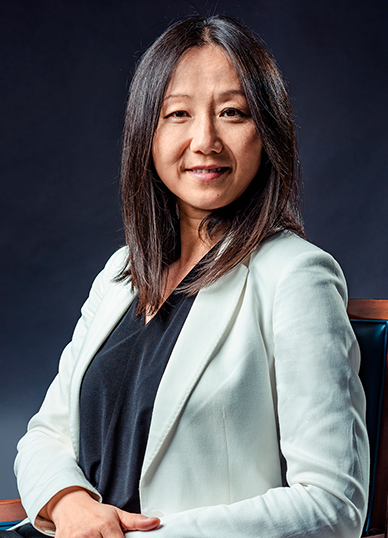
Zhenan Bao
Zhenan Bao, an American national, is a flexible electronics scientist. Born in November 1970 in Nanjing, Jiangsu Province, China. He received his Ph.D. from the University of Chicago in 11. He is currently the K. K. Lee Distinguished Professor and Visiting Professor of the Department of Chemistry and the Department of Materials Science and Engineering at Stanford University. In 1995, Professor Bao founded and served as the director of the Center for Wearable Electronics at Stanford University, and was elected as a member of the National Academy of Engineering in the same year, a Fellow of the National Society of Inventors in 2016, and a Foreign Academician of the Chinese Academy of Sciences and an Academician of the American Academy of Arts and Sciences in 2017.
Professor Bao Zhenan is an internationally renowned scholar in the field of organic electronic materials and devices, and is recognized by international peers as the pioneer and leader of printed organic electronics and biomimetic organic electronics. Her research results have provided important principles and technical support for the next generation of flexible electronic technology based on organic optoelectronic materials, and Professor Bao Zhenan has more than 100 authorized patents in the United States. She is also the founder of two Silicon Valley technology companies. She has published more than 700 research papers, been granted more than 130 U.S. patents, and has an H-index of > 180 from Google Scholar. She pioneered the molecular design concept of organic electronic materials, enabling flexible electronic circuits and display devices. Over the past decade, she has developed skin-inspired organic electronic materials that bring unprecedented performance or functionality to medical devices, energy storage, and environmental applications. Inspired by the sensitive and stretchable nature of human skin, Professor Bao designed the world’s first skin-like organic electronic device, and his representative work was published in Nature Materials and Nature Nanotechnology, and since its publication in 2010, the two papers have been cited more than 1840 and 2230 times respectively. This research result was named the top 2010 most important discovery of 100 by Discover magazine. She also won the “Impact World Chinese Award” jointly selected by Phoenix Satellite TV and more than 10 well-known Chinese media and institutions at home and abroad. Recently, she has made a major breakthrough in the preparation of new organic electronic materials, which has broken the understanding of traditional optoelectronic materials and realized that organic electronic materials can be as soft as skin without losing electrical properties. In addition, she has done pioneering work in the field of human-machine integration, published in Science in 2015, realizing the connection between artificial electronic skin and brain for the first time, laying the technical foundation for the development of future intelligent electronic devices. In recognition of her outstanding contribution to the development of artificial skin, Professor Bao Zhenan received the UNESCO “World Outstanding Women in Science Award” in 2017.
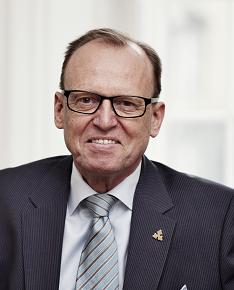
Flemming Besenbacher
Danish nationality, physical chemist. Born in October 1952 in Horsens, Denmark. He received his Ph.D. from Aarhus University, Denmark in 10. He was elected a member of the Danish Academy of Natural Sciences in 1978, the Danish Academy of Science and Technology in 1996 and the Royal Danish Academy of Sciences in 1997.
Fleming Bössenbach’s research areas span several aspects of nanoscience. In the past 20 years, he has been committed to the development and application of new variable temperature rapid scanning probe microscopy and other various surface sensitive technologies, which have been applied to many fields such as physics, chemistry, biology and medicine, and has achieved a number of scientific and technological achievements and has had an important impact on the development of surface physical chemistry. So far, he has published more than 500 academic papers, including 10 Science papers and 10 Nature and Nature series journals. Academic papers have been cited more than 20000,<> times. He adopts first-order perturbation theory, uses theory and experimental experience to reveal the essence of images, realizes the calculation of surface electronic structure through density functional theory, and promotes the further development of the tunnel theory concept of scanning tunneling microscopy. The high-resolution fast scanning tunneling microscope AARHUS STM was developed, which realized the real-time observation of surface dynamic processes, studied the dynamic process and essence of nanocatalysis on metal and alloy surfaces, the formation and growth process of nanoclusters on metal surfaces, and the quantum transport effect of nanowires, revealed the nature and law of surface chemical catalysis, proposed new ideas for catalyst design, and made significant contributions to the understanding of heterogeneous catalysis. The technology has been successfully used in the development of commercial catalysts. The rapid scan Aarhus STM developed by him has been licensed to the German company SPECS and sold to hundreds of scientific research institutions around the world, playing an important role in many disciplines. In recent years, he has also been committed to using probe technology for interdisciplinary research, successfully expanding the research on solid vacuum interface to the liquid-solid interface required in physical chemistry, biology and other research fields, and has made outstanding contributions to the self-assembly of ribonucleic acids and the mechanism research in the field of life sciences in the research of biomolecular assembly nanostructures, and the use of DNA The recognizability of molecules and the controllable assembly of three-dimensional functionally active structures, and the extension of biomolecular imaging methods to high-resolution scanning in the liquid phase, have laid a good foundation for the discovery in this field.
Fleming Bössenbach has always been committed to promoting the development of science and technology in China. For more than 50 years, we have maintained extensive and in-depth exchanges and cooperation with many well-known domestic scientific research institutions. It has accepted and trained more than 200 Chinese scholars or international students, many of whom have returned to China to work in the field of scientific research. He has been employed as an honorary professor by more than ten scientific research institutions, including the Institute of Chemistry of the Chinese Academy of Sciences, the Institute of High Energy Physics of the Chinese Academy of Sciences, Harbin Institute of Technology, Tianjin University, Jilin University, and Tongji University. He actively promotes Sino-Danish scientific and technological cooperation and exchanges. In the Danish Foundation, he initiated the establishment of a major Sino-Danish nanotechnology international cooperation project with the National Natural Science Foundation of China. It has promoted substantive scientific research cooperation between the Institute of Chemistry, Chinese Academy of Sciences, the National Center for Nanoscience, Peking University, Tsinghua University, and high-level research institutions such as AARHUS University of Danfang, COPENHAGEN University, and the Danish University of Science and Technology. Including more than <> exchange visits and student exchanges of senior researchers, dozens of bilateral exchange meetings and cooperative publication of a number of high-level research papers. He advocated and promoted the construction of the Sino-Danish Science and Education Center by the Federation of Danish Universities and the Graduate School of the Chinese Academy of Sciences. He organized Aarhus University, Tsinghua University, Peking University, and the National Center for Nanotechnology of the Chinese Academy of Sciences to establish the Sino-Danish Center for Surface Self-Assembly and Nanostructure Functional Materials, and served as the director of Danfang. He enjoys high prestige and influence in the international scientific and technological community, and with very friendly and sincere feelings, he has devoted a lot of effort to the development of China’s scientific and technological undertakings, and his contribution to China’s scientific and technological development has won him the International Science and Technology Cooperation Award of the Chinese Academy of Sciences, the Friendship Award of the Chinese Government and the International Science and Technology Cooperation Award of the People’s Republic of China.
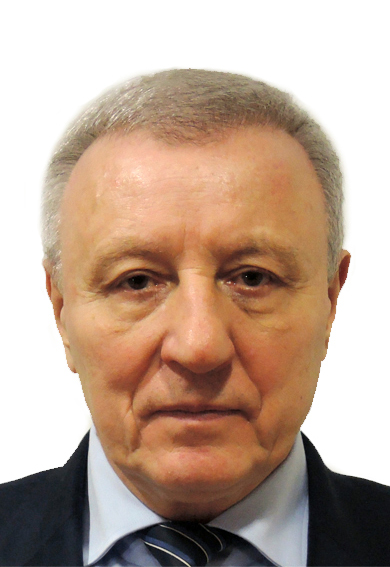
Valery Bondur
Male, Russian nationality, space geoscientist. Born in October 1947 in Poltava, the former Soviet Union, he received a doctorate in engineering in 10 and a doctorate in science in 1980. In 1990 he was elected an academician of the Russian Academy of Sciences. He is currently the Vice-President of the Russian Academy of Sciences, the President of the International Eurasian Academy of Sciences, and the Director of the Ministry of Education and Science of the Russian Federation/Institute of Space Observation Science of the Russian Academy of Sciences. In 2003, he was elected as a foreign academician of the Chinese Academy of Sciences.Professor Bundu’s main academic contributions have provided the theoretical basis and methodology for the creation of space observation systems for ocean, atmosphere, land and near-Earth space, and have made systematic achievements in natural disaster monitoring, environmental protection, marine exploration and related geoscience research. He developed the spatial spectrum measurement and multi-frequency radio wave recording methods of ocean remote sensing, multi-frequency emission tomography and radiometry, developed the remote diagnosis method of short-term precursor of strong earthquakes, the online satellite monitoring method of atmosphere and ionosphere, and established a new information feature corresponding to the aerospace imaging spectrum reflecting the shape, direction and energy distribution of ground objects. The early unknown phenomenon of spatial structure deformation of ocean waves and the honeycomb structure of the near-surface layer of the ocean were discovered, the new geomorphological contour system changes detected by satellite images during earthquake breeding and eruption were revealed, and the interaction mechanism between deep hydrophysical fields and surface waves and near-surface ocean layers was elucidated. The methods and theories proposed by him have solved a series of key problems in Earth observation and have been applied in five remote sensing satellite systems in Russia. His initiatives included marine space monitoring, monitoring of natural disasters and air pollution, satellite monitoring of terrestrial ecosystems, and ongoing or planned implementation. He has published more than 5 papers and monographs, with an H-index of 650. His systematic research achievements have made him an influential scientist in the field of space observation in Russia and internationally.
In the past 20 years, Academician Bondu has actively carried out cooperation with the Chinese scientific and technological community and made contributions in three aspects: 1) Contributing to the construction of the China-Russia transport corridor in the Silk Road Economic Belt. He served as the general director of the Sino-Russian Foundation cooperation project “Research on China-Russia Transport Corridors Based on Digital Earth Theory – Taking the Region Along the Silk Road as an Example” and the BRICS Special China, Brazil and Russia Environmental Remote Sensing Cooperation Project, providing new methods and technologies for the research on environmental issues along the Belt and Road. 2) Contribute to our country’s becoming the initiator of the Pan-Eurasian Scientific Experiment Program (PEEX). PEEX is a long-term international scientific program for global environmental change research, he cooperated with Finnish and Chinese scientists to make PEEX a large-scale scientific program led by Finland, Russia and China, and set up the PEEX Program Beijing Office in the Institute of Remote Sensing of the Earth of the Chinese Academy of Sciences; 3) Contribute to the development of the International Eurasian Academy of Sciences (IEAS) China Science Center. As the dean of IEAS, he has long played an important role in the establishment, construction and development of the IEAS China Center. At present, IEAS China Center has more than 160 academicians, nearly one-third of whom are also academicians of the Chinese Academy of Sciences and the Chinese Academy of Engineering.
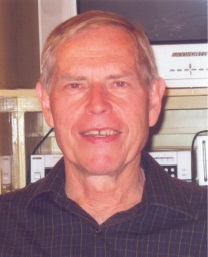
Burrell Clark Burchfiel
Geologist and U.S. citizen. He received a bachelor’s degree from Stanford University in 1957, a master’s degree in 1958, a Ph.D. from Yale University in 1961, and a professor at RAAS University in 1970. Member of the National Academy of Sciences (1985), member of the American Academy of Arts and Sciences. In 1997, he was awarded the “Friendship Award” by the Chinese government.
Professor Birchfield has high academic attainments in continental geology and structural geology, and enjoys a high reputation in the international geoscience community. Since the 60s, extensive and in-depth research has been carried out on the world’s important non-collisional orogenic belts and collisional orogenic belts, and has made outstanding contributions to improving the understanding of the laws of tectonic evolution and tectonic form of orogenic belts. Since the early 80s, he has vigorously advocated and engaged in the study of continental tectonics, which has promoted the development of continental dynamics. In 1998, he was elected as a foreign academician of the Chinese Academy of Sciences.
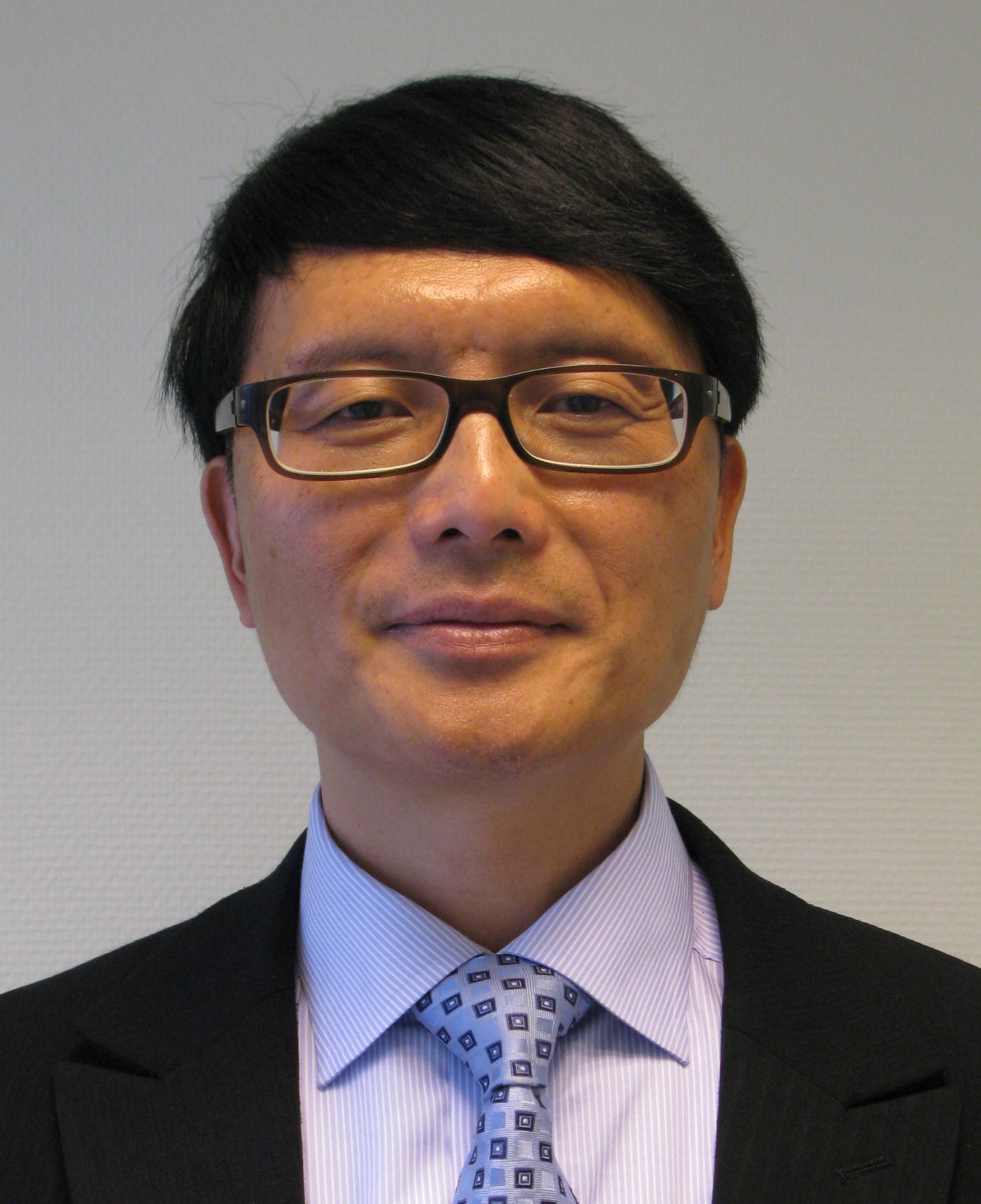
Deliang Chen
Male, Swedish nationality, climatologist Born in July 1961 in Taizhou, Jiangsu Province. He received his Ph.D. from the University of Mainz, Germany. He is currently the August Röhss Chair Professor at the University of Gothenburg in Sweden and Deputy Dean (in charge of research) at the Faculty of Science at the University of Gothenburg. He was elected a member of the Royal Swedish Academy of Sciences in 1992, the Royal Academy of Arts and Sciences of Gothenburg in 2010 and the Academy of Sciences for Developing Countries in 2013. In 2015, he was elected Director-Elect of the Faculty of Geosciences of the Royal Swedish Academy of Sciences (2017-2018). In 2023, he was elected as a foreign academician of the Chinese Academy of Sciences.
Chen Deliang is an internationally renowned advocate and practitioner of earth system science, and his research work runs through geographical science and atmospheric science. He has systematically studied the different scales and transformations of climate variability and change in Europe and Asia, and is an internationally renowned expert on downscaling models. Due to the low resolution of global climate models, which cannot meet the demand, downscaling has become one of the key issues in climate prediction and climate change research. As one of the pioneers in this field, he systematically developed a theoretical framework of downscaling based on weather and climatology, and creatively linked its physical processes related to the greenhouse effect and objective atmospheric circulation classification, and established downscaling models through a series of statistical methods. This framework has been widely used to estimate future local climate change and uncertainties and to validate climate models. Another of his contributions was the development of objective classification methods for atmospheric circulation, which laid the foundation for the study of connecting weather and climate and their effects in the middle and high latitudes. Recently, he proposed a biome-based method to characterize the concept of climate variability and change, which expanded the traditional focus of global change research from temporal change to spatial change, which provided a new idea and method for identifying sensitive areas of ecosystems, and has been widely used in many fields.
Chen Deliang is also a rare strategic scientist with a global perspective, and has an important influence and position in the world scientific community.
In the past 2016 years, Chen Deliang has successively cooperated with several institutes of the Chinese Academy of Sciences, the China Association for Science and Technology, the Academy of Agricultural Sciences, the Meteorological Bureau and many universities to cultivate young and middle-aged talents, improve the level of academic journals and the construction of science and culture, and provide consultation to academic institutions and central and local governments. For example, he served as the scientific director of the National Climate Center of the China Meteorological Administration for eight years, making important contributions to the development of climate research and business in China. He has continuously introduced and publicized the achievements and contributions of Chinese scientists to international organizations, academies of sciences and research institutions, and large scientific and technological award evaluation institutions, and made great contributions to China’s scientific and technological innovation to the international stage and enhance its influence, and Chinese scientists to obtain the international honors they deserve or gain leadership positions in international programs or organizations. He loves China, with his knowledge, people, experience, and international influence beyond disciplines, he has made outstanding contributions to the development of China’s science and technology, for which he also won the 2017 International Science and Technology Cooperation Award of the Chinese Academy of Sciences, and became an official candidate for the International Science and Technology Cooperation Award of the People’s Republic of China.
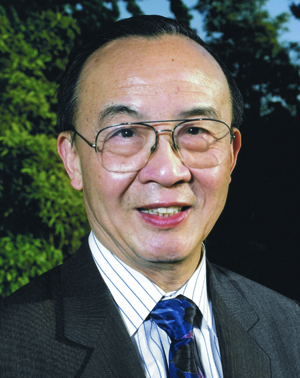
Shu Chien
Founding Director, Institute of Engineering in Medicine Professor, Bioengineering, UC San Diego
Shu Chien joined UCSD in 1988 and became the founding chair of the Department of Bioengineering in 1994. In 2008, Chien became the founding Director of UC San Diego’s new Institute of Engineering in Medicine. As principal investigator on the Whitaker Foundation Development Award (1993) and Leadership Award (1998), Chien played a major role in establishing UCSD’ bioengineering program as one of the top in the country. As founding Director of the Whitaker Institute of Biomedical Engineering at UCSD, he helps foster collaborations among the faculty of UCSD and with research institutes and biomedical companies in San Diego. As founding Director of the UC Systemwide Bioengineering Institute in California, he has facilitated collaborations in research and education among the ten UC campuses. In September 2006, Chien was named the inaugural holder of the Y.C. Fung Endowed Chair in Bioengineering at the Jacobs School. He is a member of the National Academy of Engineering, Institute of Medicine, National Academy of Sciences, and American Academy of Arts and Sciences. He received the National Medal of Science, the highest honor in science and engineering in the United States, in 2011. He received his M.D. from the National Taiwan University and his Ph.D. in Physiology from Columbia University, where he was a professor from 1969 to 1988. His research interests are molecular, cellular, and integrative bioengineering, with focus areas on mechanotransduction and mechanobiology of endothelial cells and role of extracellular environment in regulation of stem cell fate.
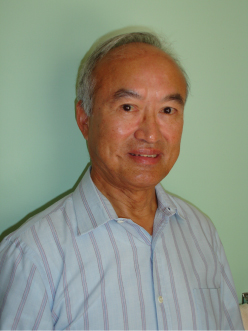
Alfred Y. Cho
American electrical engineer. He graduated from the University of Illinois in 1960 and received his master’s degree and doctorate in 1961 and 1968. Member of the National Academy of Sciences (1985), American Academy of Engineering (1985), American Academy of Sciences and Arts (1989). Professor and Director of the Semiconductor Research Institute at Bell Labs, AT&T Corporation of the United States.
Professor Yihe Zhuo is internationally recognized as the founder and pioneer of molecular beam epitaxy, the growth of artificial microstructured materials, and the research field of novel devices. He has systematically carried out a lot of pioneering research on heteroepitaxy and artificial structure of III.-V compound semiconductors, metals and insulators, quantum wells, superlattices and modulated doped microstructured materials. With the new materials developed, we were the first to successfully research more than 10 kinds of extremely important and excellent new microwave high-speed electronic devices and optoelectronic devices. Now he leads the collaborators of the Semiconductor Institute of AT&TBell Laboratories to pioneer the successful development of a new quantum well cascade laser, which is considered to be another milestone in the development of semiconductor lasers.
Professor Zhuo Yihe was extremely concerned about the development of molecular beam epitaxy technology in China and gave key guidance. It has established a profound friendship with our counterparts and made important contributions to promoting academic exchanges between China and the United States and enhancing China’s status and influence in the international academic community. On June 1996, he was elected as a foreign academician of the Chinese Academy of Sciences.
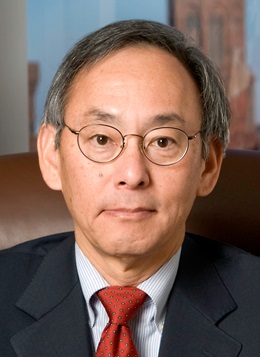
Steven Chu
American physicist. He graduated from the University of Rochester in 1970 and received his Ph.D. from the University of California, Berkeley in 1976. He was elected to the National Academy of Sciences in 1993. From 1978 to 1987, he worked at Bell Labs, an American telegraph and telephone company. Since 1987, he has been a professor at Stanford University.
Professor Steven Chu has long been engaged in the research of atomic physics and laser science. For his independent, pioneering work in laser cooling and trapping atoms, he was awarded the 1997 Nobel Prize in Physics with Claude Cohen-Tannouji and William D. Phillips. In 1985, he and his colleagues used a set of crossed laser beams to create a “photoviscose” effect, in which the speed of the target atom dropped from 4,000 km per hour to 1 km per hour, as if the atom were moving through a dense viscous. The temperature of the decelerated atom is close to absolute zero (-273.15°C or -459.67°F). He and his colleagues also developed an atom trap that uses lasers and magnetic coils to trap and study cooled atoms. These techniques have allowed scientists to improve the accuracy of atomic clocks used for space navigation, build atomic interferometers that accurately measure gravity, and design atomic lasers that can be used to process very fine-scale electronic circuits.
Professor Steven Chu has always paid attention to and supported China’s scientific research work, participated in conferences and lectures in China many times, and expressed his willingness to make efforts to promote scientific and technological exchanges between China and the United States. On June 1998, he was elected as a foreign academician of the Chinese Academy of Sciences.

Ching-Wu Chu
American physicist. He graduated from National Cheng Kung University in 1962. In 1965 and 1968, he received his master’s and doctoral degrees from Fordham University and the University of California, San Diego. In 1989, he was elected a Fellow of the National Academy of Sciences, a Fellow of the Academy of Humanities, and a Foreign Fellow of the Royal Society. He received the National Medal of Science, the Comstock Award of the American Academy of Sciences in 1988, and the Excellence Award in Superconductivity Science in 1994. Director of the Superconductivity Research Center and Professor of the Department of Physics, University of Houston, Texas.
Professor Jingwu Zhu is a pioneer in the study of high-temperature superconductivity and one of the discoverers of liquid nitrogen temperature superconductivity. This achievement has played a huge role in the development of superconductivity research and condensed matter physics in the whole.
Professor Zhu Jingwu is one of the earliest Chinese-American scholars to establish friendly relations with China’s scientific and educational circles. In 1979, he helped the Institute of Physics of the Chinese Academy of Sciences to develop the research of box high-voltage technology and physics, and was hired as an honorary researcher of the institute. In 1988 and 1991, he was successively appointed as an honorary professor of Sun Yat-sen University and Nankai University, and actively assisted Nankai University in developing new energy nickel-hydrogen battery technology. In 1996, he was elected as a foreign academician of the Chinese Academy of Sciences.
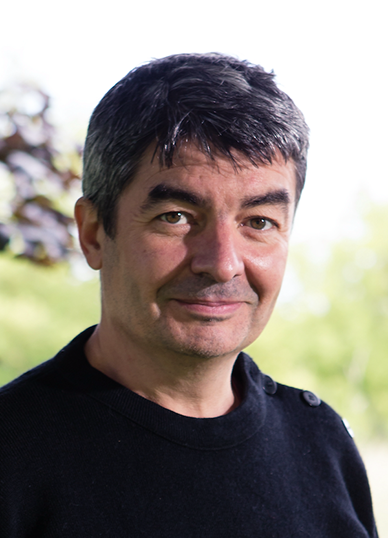
Philippe Ciais
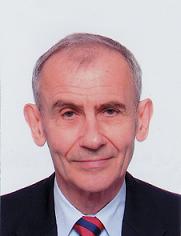
Philippe G. Ciarlet
French nationality, applied mathematician. Born in Paris, France in October 1938, he received his Ph.D. from the Case Institute of Technology in 10 and his national doctorate from the University of Paris in 1966. He was elected a member of the French Academy of Sciences in 1971 and the French Academy of Engineering in 1991.
Philippe Chiare focuses on applied mathematics and computational mechanics. He has been committed to the use and development of profound mathematical tools to solve important problems in mechanics and modern engineering, and has made significant achievements and contributions. The main achievements are: 1 In order to effectively solve a series of important problems in fluid mechanics and solid mechanics, he made fundamental contributions to the establishment of the theoretical basis of the finite element method. A monograph published in 1978 has now become a classic monograph in the field. 2. For the elastic thin bodies (plates, shells and their combinations) that often appear in modern industry, the method of asymptotic analysis is creatively applied to establish a mathematical model, and a complete basic theory is given. This part of the work is often referred to in the scientific literature as ” Chiare ‘s plate theory ” or ” Chiare ‘s shell theory ” . 3. The elastic shell is one of the most difficult research objects in mechanics, and he developed new models and methods for its theoretical and numerical calculations, and made fundamental extensions to classical differential geometry, so that the KORN inequality on surfaces can be established.
Philippe Chiare is very concerned about the development of mathematics and the cultivation of talents in China. Since his first visit to China in 1982, he has successively visited Peking University, Wuhan University, Fudan University, Southeast University, Xi’an Jiaotong University, Tsinghua University, the Computing Center of the Chinese Academy of Sciences, the Institute of Mathematics and the Institute of Systems Science, and made sustained and positive contributions to the construction and development of applied mathematics in China through a series of lectures, organizing or participating in academic conferences or workshops. He is an honorary professor of Fudan University and Xi’an Jiaotong University. His in-depth research results on elastic mechanical systems have led Fudan University to officially open up cutting-edge research directions on elastic dynamics. As one of the main initiators and organizers, he greatly promoted the establishment of the Sino-French Institute of Applied Mathematics (ISFMA) in Fudan University, and served as the director of the French side (1999-2001) and the chairman of the French academic committee (2001-2003). and actively presided, participated in or planned a number of academic activities of the Sino-French Institute of Applied Mathematics. He actively participated in the organization of the “International Conference on Control, Partial Differential Equations and Scientific Computing” hosted by the Chinese Academy of Sciences in honor of the late famous French mathematician Professor Ons, and was invited to give the first report. It has trained 5 doctoral students from China. His monographs and textbooks such as “Numerical Analysis of Finite Element Method” and “Mathematical Elasticity Theory” have been translated and published Chinese Shanghai Science and Technology Press, Higher Education Press and Science Press. He and Li Daqian have co-edited a series of modern applied mathematics books that cover many hot and cutting-edge issues in modern applied mathematics. He has also been appointed as an editorial board member of two major core mathematical journals published in China Chinese Annals of Mathematics and Journal of Computational Mathematics.

Aaron J. Ciechanover
Israeli nationality, biochemist. Born in October 1947 in Haifa, Israel. He received his Ph.D. from the Technion in 10. He was elected a member of the Israel Academy of Humanities and Natural Sciences in 1981 and was awarded the Nobel Prize in Chemistry in 2004.
Aaron Ciejanovo has a deep knowledge in the study of protein metabolism regulation in human cells, and has been committed to studying the mechanism of protein metabolism in human cells and its connection with the occurrence of major human diseases. The 2004 Nobel Prize in Chemistry was awarded to Aaron Ciekhanovo and two other scientists Avram Hershko and Owen Ross for their discovery of the ubiquitin-regulated mechanism of protein degradation. Their result was the discovery of an important mechanism by which a protein “dies.” They made a breakthrough discovery of how human cells control a certain protein, specifically, the process by which human cells “waste dispose of” unwanted proteins. His achievements have opened up a new field of cell research, and the resulting research on the regulatory mechanism of cell metabolism and apoptosis is of great significance for further revealing the mysteries of organisms, as well as exploring the pathogenesis and treatment methods of some diseases. He enjoys a high international reputation, has a profound professional and technical level in biomedical theoretical research, and has rich experience in new drug research and development and scientific research team building. His research revealed that the ubiquitin-proteasome system degrades intracellular proteins and is widely present in the regulation of disease-related cellular processes as well as the regulation of membrane receptors. His research results were applied to the development and manufacturing of the world’s first proteasome inhibitor drug for the treatment of multiple myeloma and mantle cell lymphoma, and successfully marketed by a company in the United States, with current market sales of $10 billion. In 2005, in a poll by the Israeli news website Ynet, he was voted 200st among the 31 greatest Israelis. As one of Israel’s first Nobel laureates in science and technology, Professor Aaron has played an important role in the history of the Israeli nation and technology.
He has long been concerned about the development of scientific research in China and has established close cooperation with Chinese scientists. He has attended many conferences held in China and made important reports on scientific and technological development at the conference, which has greatly promoted exchanges and cooperation between academia at home and abroad. He has maintained deep cooperative relations with many domestic universities and research institutes, serving as honorary professors in more than a dozen colleges and universities such as Nanjing University, Nankai University, Tianjin University, Chinese Academy of Medical Sciences, Fourth Military Medical University, Xi’an Jiaotong University, etc., and jointly cultivated students with domestic scientific research institutions, tackled scientific problems, achieved all-round cooperation, and made great contributions to China’s education and scientific research.
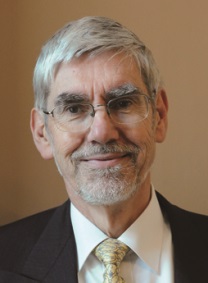
Vincent Courtillot
Geophysicist. French nationality. Born in March 1948 in Paris, France. In 3, he received a third-stage doctorate in geophysics from the University of Paris VI, France, and in 1974, he received a French national doctorate in geophysics from the University of Paris VII, France. He is currently the Director of the Institut Geophysics in Paris, France, Professor at the University of Paris VII, France, and Chairman of the Scientific Advisory Group of the City of Paris, France. Member of the French Academy of Sciences (1977) and the European Academy of Sciences (2003).
Kurtio’s main scientific and technological achievements include: potential energy field theory and the instantaneous change law of geomagnetic field, and the discovery of the accelerated beating of long-term changes of the geomagnetic field; The propagation characteristics of the first intracontinental cracking were discovered; The latitudinal displacement and intracontinental deformation of several blocks in Tibet were quantitatively summarized. It also made paleogeographical reconstruction of the Asian plate over 2 million years; proved that the huge thick basalt body of the Deccan Basalt Plateau in India erupted in less than 5 million years, and the eruption time coincided with the age of a large number of species extinction events at the boundary of the Mesozoic and Tertiary periods; proposed that volcanic eruptions may be the main cause of important ecological crises; revealed that volcanic eruptions heralded the opening of large ocean basins, and the geometry of the ocean reflected the record of several mantle magma mass collision points; same as Jean Professor Besse obtained the apparent polar shift curves and paleogeographic reconstruction lattices of the world’s major continents; The idea that several types of hot spots can coexist is proposed, of which a dozen should have originated deep in the mantle; and studying the impact of volcanic eruptions on climate and modelling the relationship between the two.
Kurtio is full of enthusiasm for China’s scientific research, actively trains Chinese researchers, strives to promote scientific and technological cooperation and exchanges between China and France, and makes important contributions to the development of China’s scientific research. Since 1981, he has visited China many times to carry out geological field investigations with his Chinese counterparts, participated in and presided over a number of Sino-French geoscience cooperation projects, received many delegations of scientists from China, and cultivated a large number of Chinese scientific research talents. During his tenure as Special Advisor to the Minister of Education, Research and Technology and Director of the Ministry’s Research Agency, he actively promoted educational and scientific and technological cooperation between China and France. After the head of government, Prime Minister Jospin, accepted the proposal made by him and the then Minister of Education, Professor Allègre, and Foreign Minister Védrine to include China as one of the four countries of France’s main foreign cooperation, he paid an official goodwill visit to China with the Minister of Education, Professor Allègre, and signed important agreements such as increasing the exchange of researchers and doctoral students between the two countries. Professor Kurtiou has proposed the establishment of a Sino-French joint laboratory, including the French National Institute of Computer Automation, the French Academy of Agricultural Sciences and the French Geological Investigation Agency, which has played an important role in promoting Sino-French scientific research cooperation in the fields of computers, remote sensing and artificial intelligence.